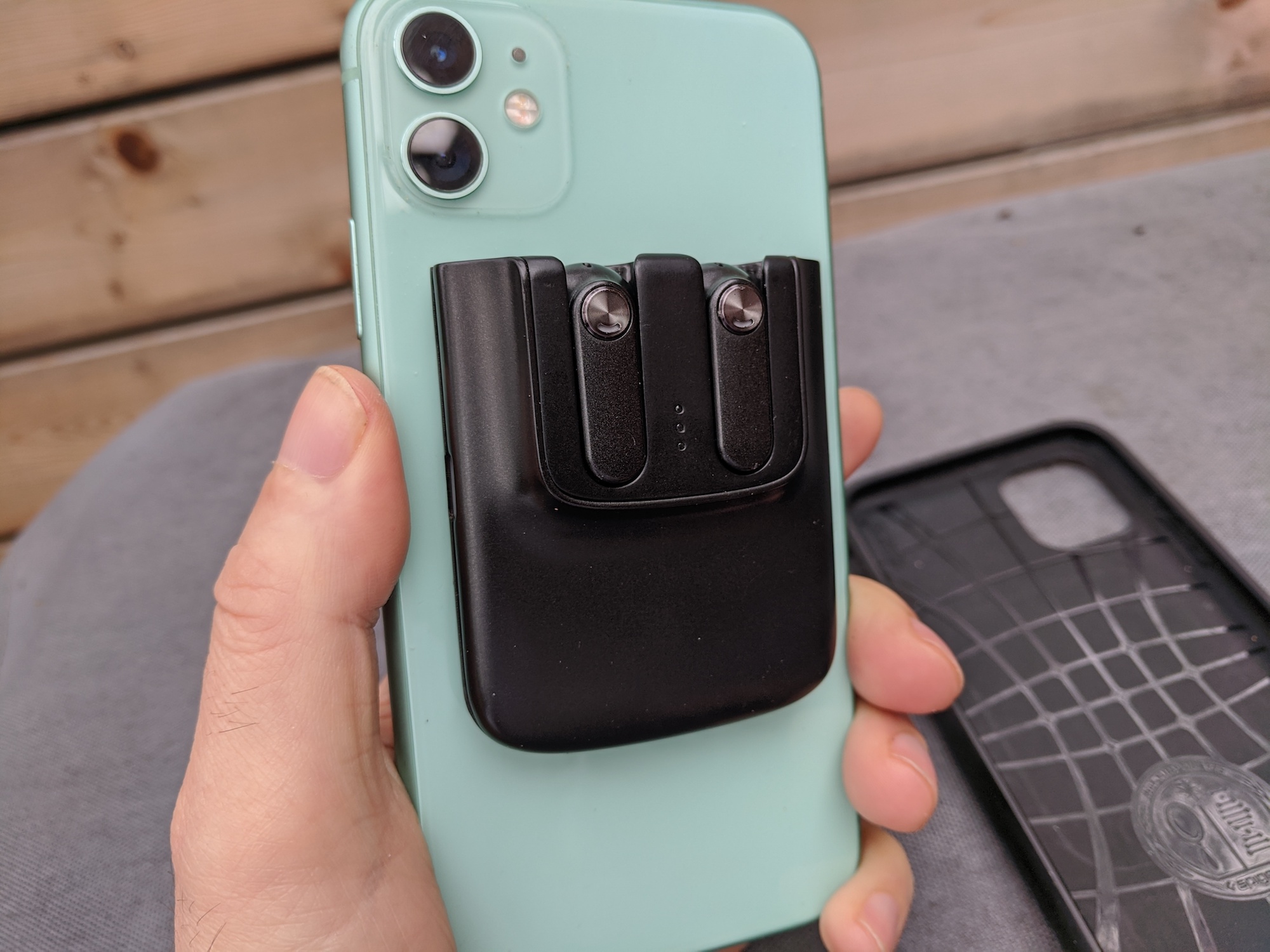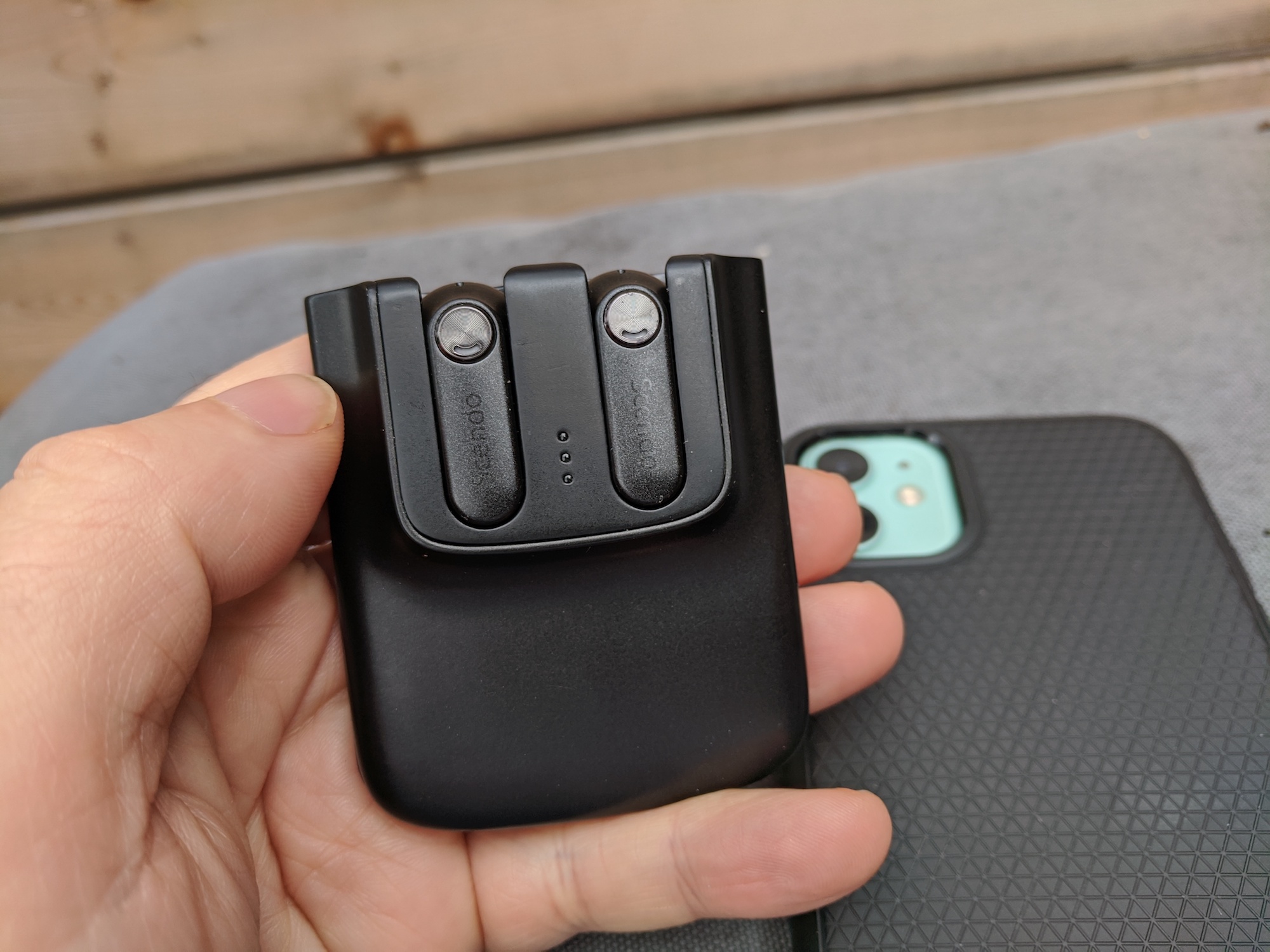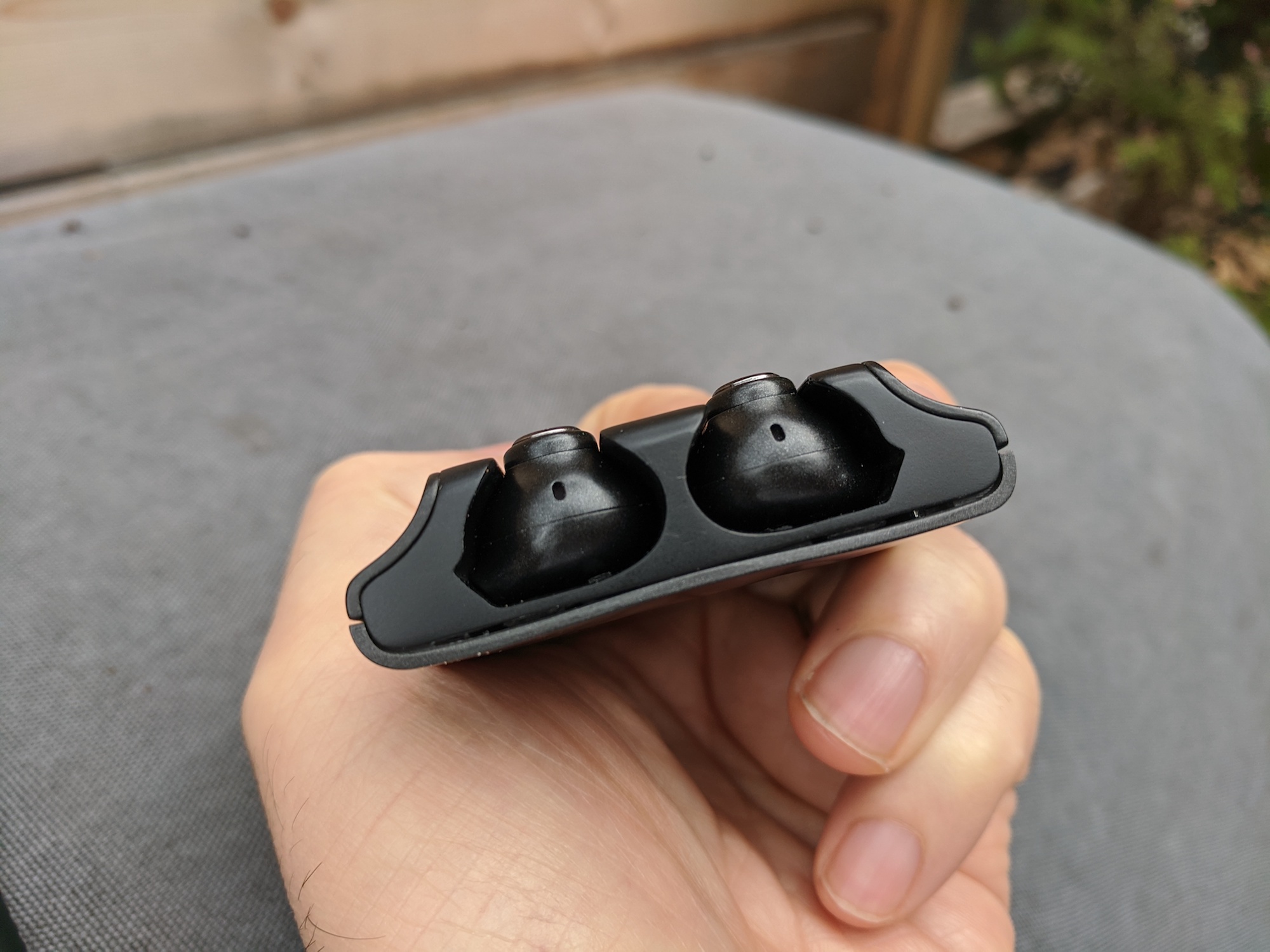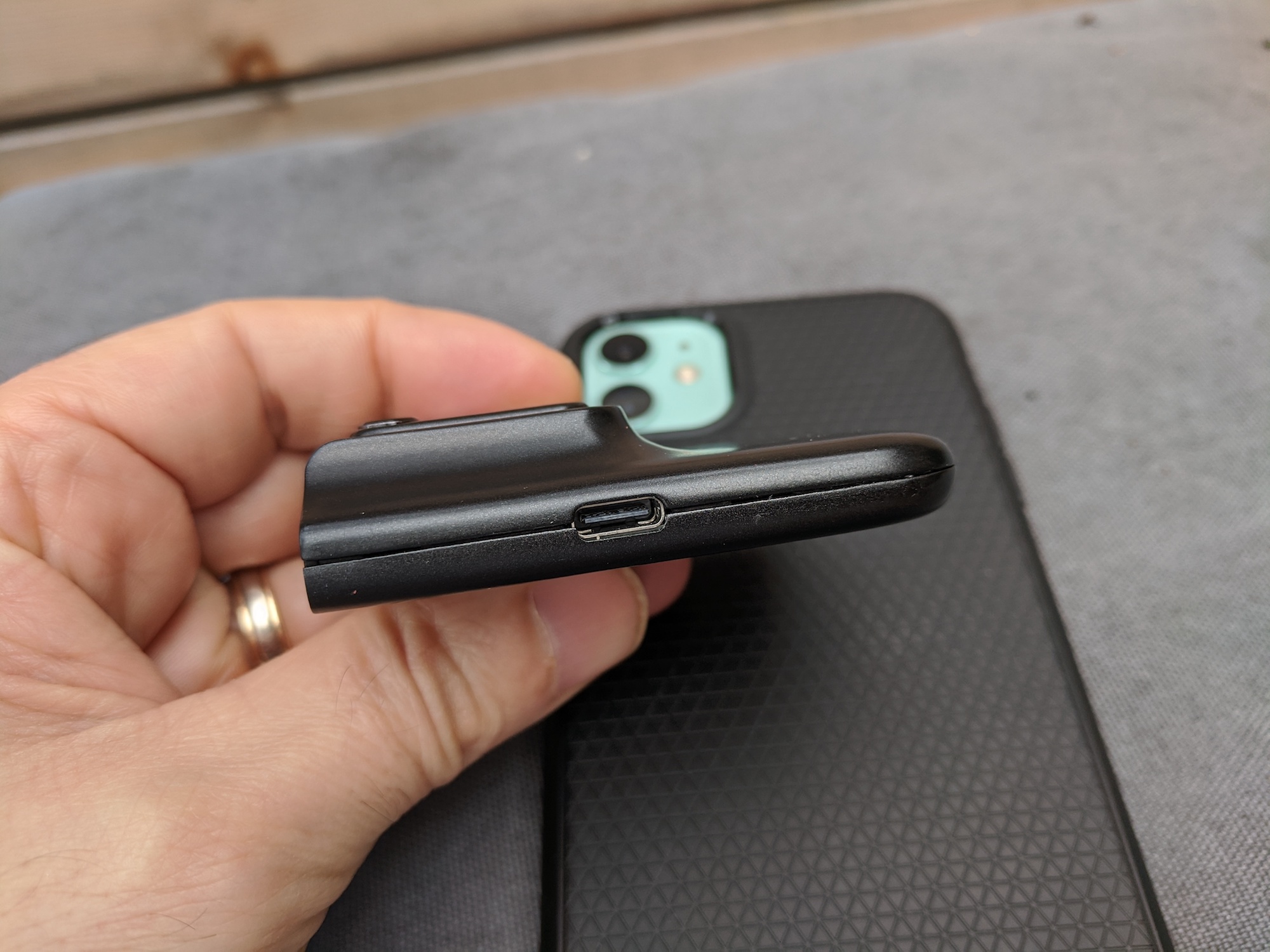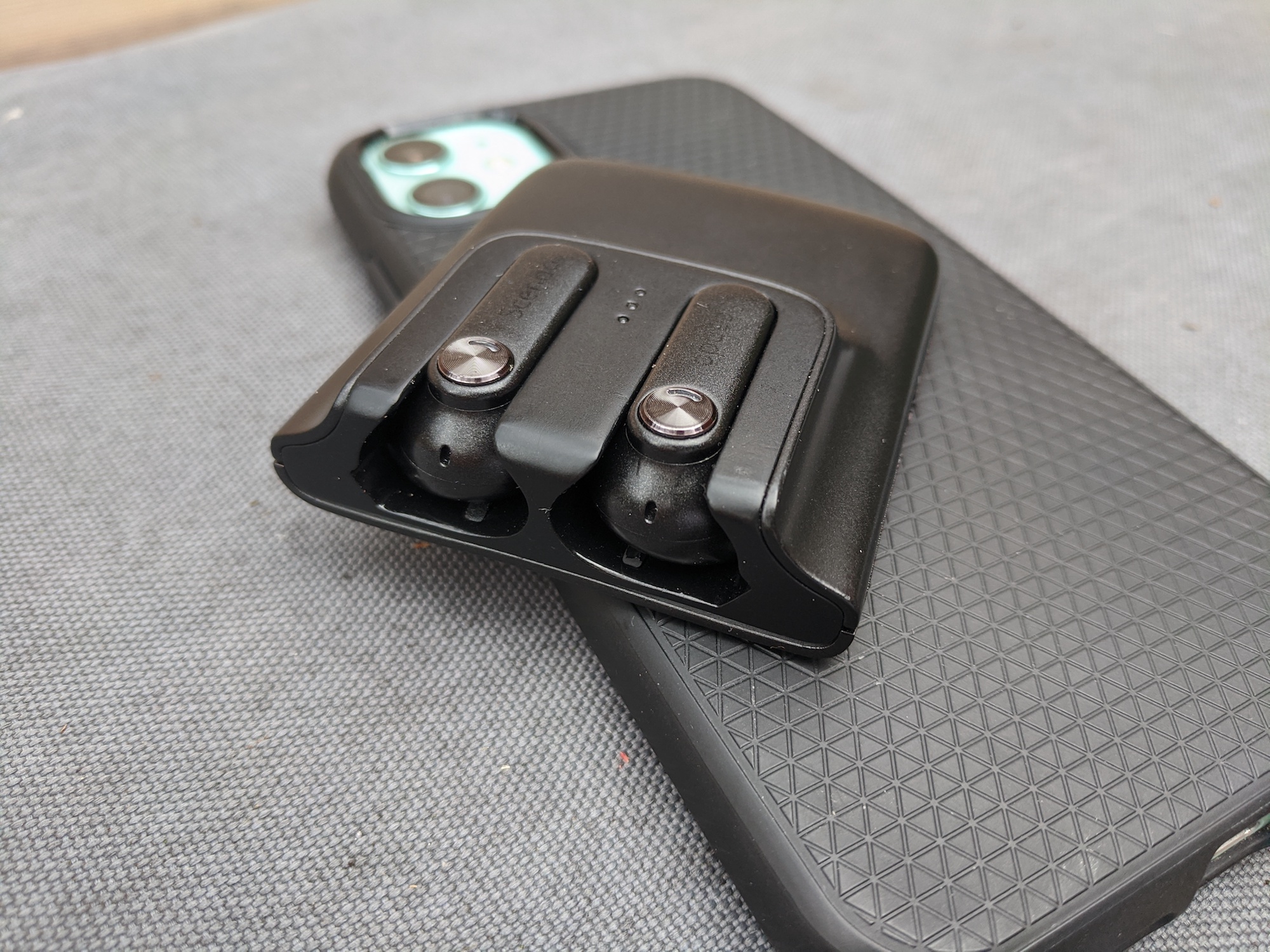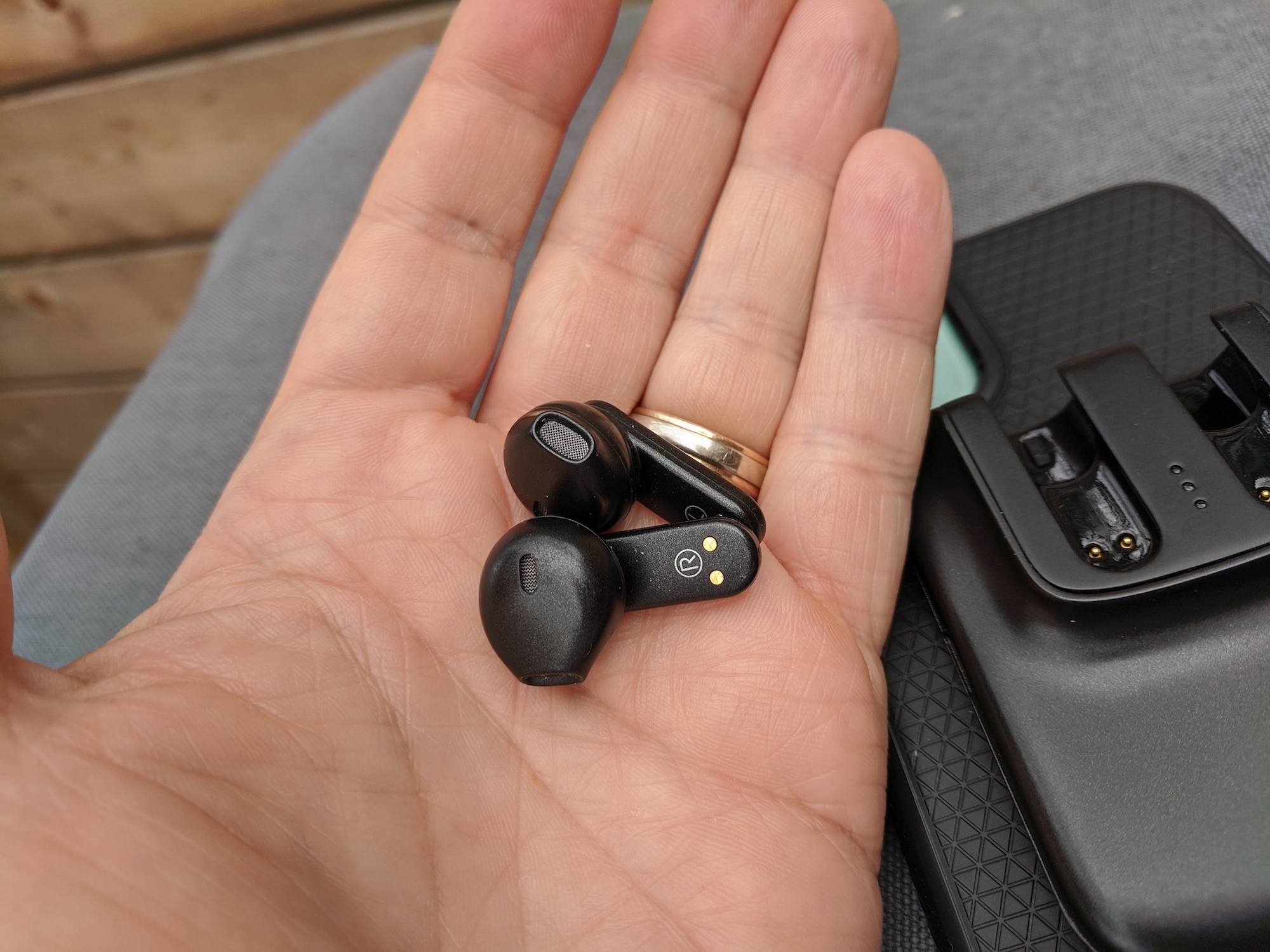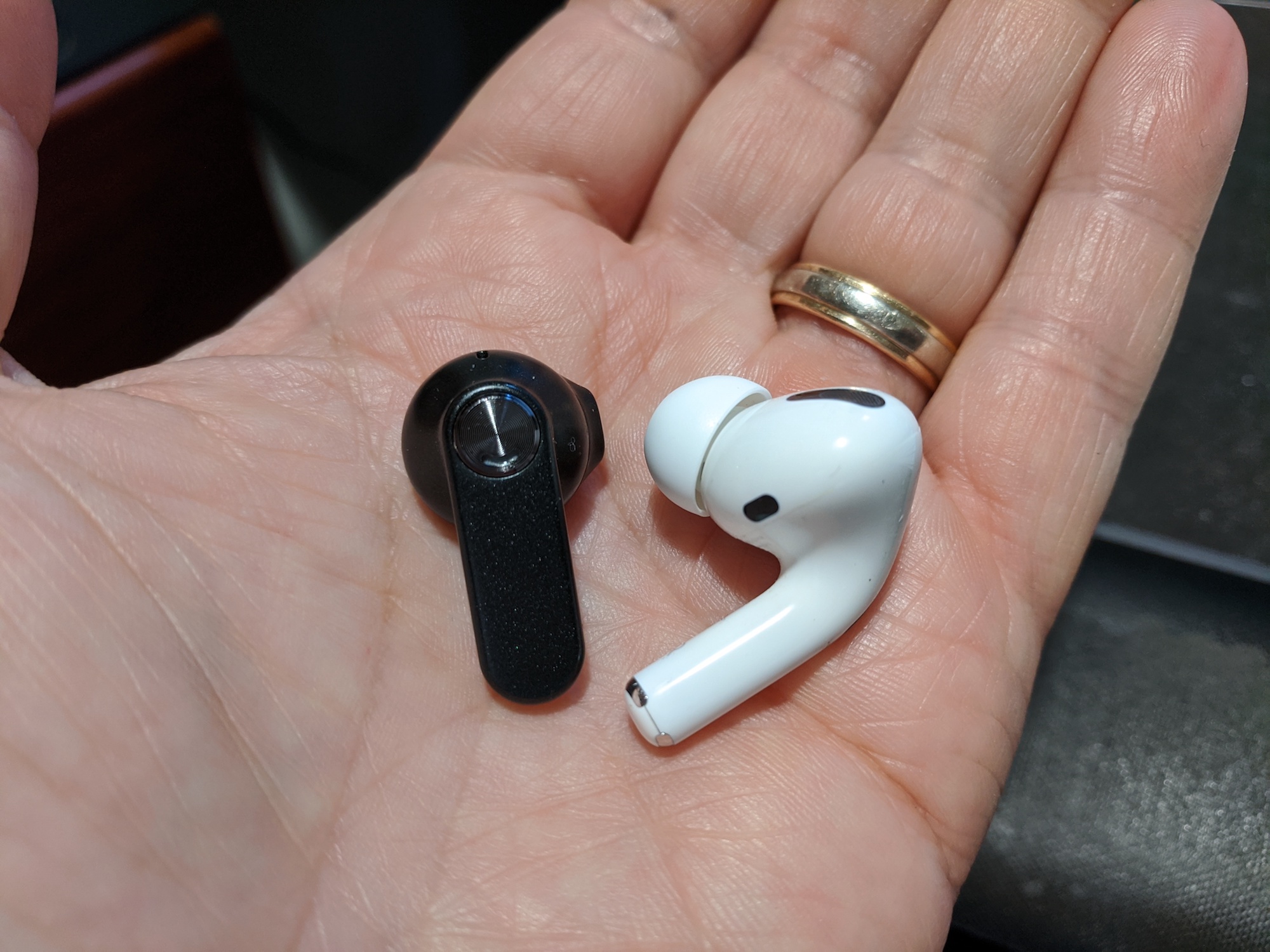Here at Digital Trends, we’ve seen a lot of true wireless earbuds, and virtually every model we’ve tried uses a charging case that must be slipped into a pocket or purse. But the $75 Scendo Snapods, currently raising funds on Kickstarter, take an entirely different approach. The Snapods sit inside a very thin charger that latches magnetically to the back of a MagSafe-equipped iPhone 12.

Not everyone has a fancy new iPhone, so the Snapods ship with a thin metal frame that can be stuck to any flat surface, including the backs of most smartphones. That metal frame is just ferrous enough that it can hold the Snapods charger to the back of a phone, even through a protective case. The charger can be recharged via USB-C or wirelessly with any Qi-compatible charging device.
The charger adds just under half an inch to the thickness of your phone, which doesn’t sound like much, but it’s almost twice as thick as most modern phones. However, as much as that’s a fair amount of extra bulk to contend with, it’s not much extra weight: The Snapods weigh only a scant 0.14 ounces each and their charger weighs 1.5 ounces, for a total of 1.78 ounces — an almost imperceptible addition to my iPhone 11.
Despite their tiny size (the Snapods are smaller than both the AirPods and AirPods Pro), you get about five hours of battery life per charge, and the case holds an additional 40 hours, for a total play time that is almost twice as long as what you get from the AirPods. That battery life is due in part to the Snapods’ use of one of Qualcomm’s newest Bluetooth chips, the QCC3040, which expends very little energy. Unfortunately, one of the QCC3040’s key capabilities has been wasted — the chip supports active noise cancellation (ANC) but that is not a feature of the Snapods.
Scendo also claims an IPX5 rating for water resistance, which is slightly more protection from water and sweat than the AirPods Pro, and significantly better protection than the regular AirPods.
On the bright side, the Snapods are super-comfortable and they’ve got very acceptable sound quality. It’s nowhere near as good as you can get from inexpensive in-ear models like the Earfun Air, which deliver better frequency response across the spectrum. There’s also no way to adjust the EQ if you don’t like it, but it’s no worse than what you’d get from Apple’s AirPods. The touch controls are responsive and they do everything you could ask for, from volume control to accessing your voice assistant.

But the Snapods’ biggest selling point — the convenience of having your earbuds mounted magnetically to your phone — is literally their biggest weakness. Without a case on my phone, the Snapods were able to cling to the metal frame relatively securely. Once in place, the charger didn’t move much — that is, until I tried to put the combined device into my jeans pocket. You may have a different experience depending on the size of your pockets, but for me, the charger separated from the phone every time. Using a fairly basic case reduced the magnetism a lot. A gentle shake of the phone was enough to dislodge the charger from its spot.
Trying to hold and use the phone without accidentally pushing the charger off of its mounting area quickly became an exercise in frustration. I ended up sticking the charger in a separate pocket, which totally defeated the purpose.
It’s quite possible that a MagSafe-equipped iPhone would perform better — I didn’t have one on hand that I could use for a test. The charger’s magnets did prove incredibly powerful when I placed it on the side of a metal filing cabinet. But given that most folks will end up relying on the included metal frame, I think my experience will be more common than not.
You may also experience problems with being able to wirelessly charge your phone with the addition of the stick-on metal frame. I tried charging the iPhone 11 on two different wireless chargers after applying the frame. Both had worked well beforehand, but only one of them could charge the phone afterward.
There were also visible gaps in the plastic parts of the charging case, which didn’t inspire a lot of confidence around build quality, but this may improve with the final production run, which the campaign claims will happen in early 2021.
It’s worth noting that the Scendo Snapods are subject to the many crowdfunding caveats you should be aware of. We’ve tried them out — they’re not vaporware — but we’ve never heard of Scendo before, and googling the company name doesn’t turn up much info. The Kickstarter project page’s About Us section tells us nothing about the people who are working on this project, so we can’t even comment on their experience or track record when it comes to delivering on their promises. As with all crowdfunded efforts, it’s very much buyer beware.
Editors' Recommendations
- Sennheiser debuts new ergonomically shaped wireless earbuds
- Jabra’s $100 Elite 4 are its most affordable ANC earbuds yet
- Sennheiser Sport earbuds minimize your body’s noises
- Creative’s Outlier Pro ANC earbuds have massive battery life
- Every true wireless earbud feature explained
